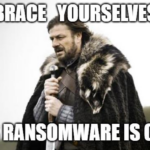No products in the cart.

Welcome, let's begin our journey through the practical use of GCHQ's CyberChef versions… Yes, there are three of them. What you will learn: How to use CyberChef server, in a Virtual Machine, on a network with other Virtual Machines. What you should know: How to use and configure Virtual Machines....
Author
Latest Articles
 NewOctober 3, 2023Hunting Hackers Using Autopsy on a macOS Image
NewOctober 3, 2023Hunting Hackers Using Autopsy on a macOS Image OfficialSeptember 26, 2023Hunting for macOS Ransomware Using VirusTotal Enterprise
OfficialSeptember 26, 2023Hunting for macOS Ransomware Using VirusTotal Enterprise OfficialSeptember 10, 2023VirusTotal’s Code Insight Versus ChatGPT Analysis
OfficialSeptember 10, 2023VirusTotal’s Code Insight Versus ChatGPT Analysis New EditionSeptember 1, 2023Forensic Fun with Cryptographic DataFrames using Python
New EditionSeptember 1, 2023Forensic Fun with Cryptographic DataFrames using Python
Subscribe
Login
0 Comments